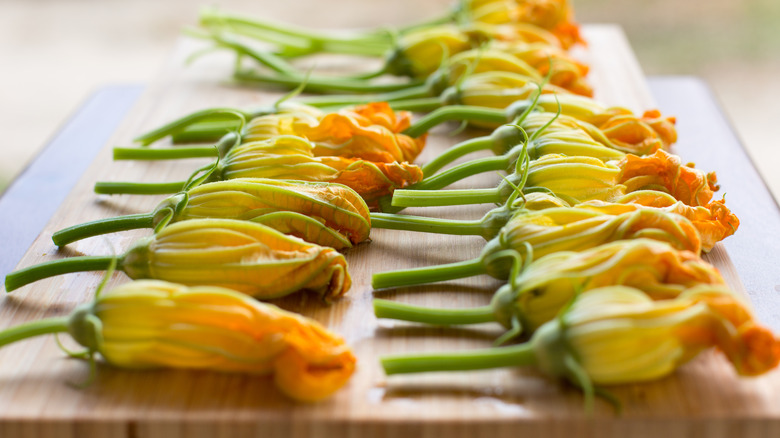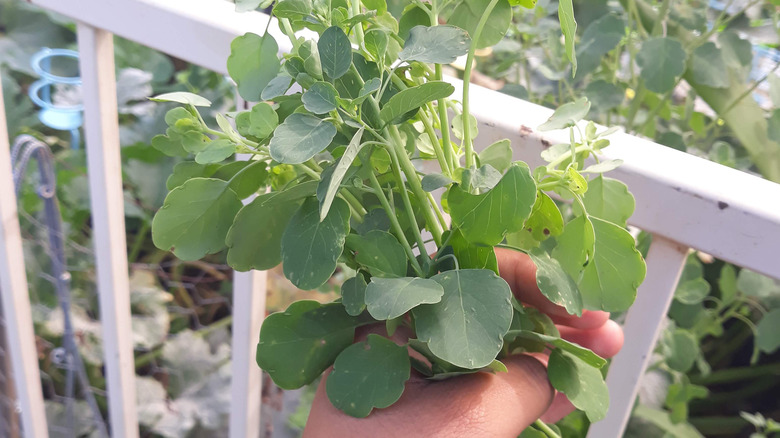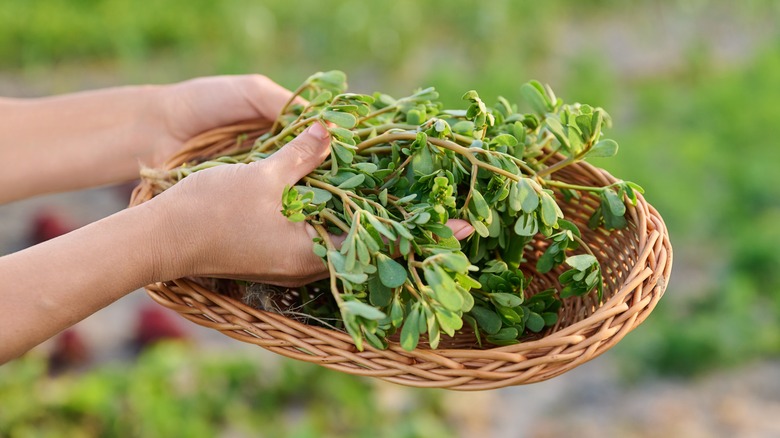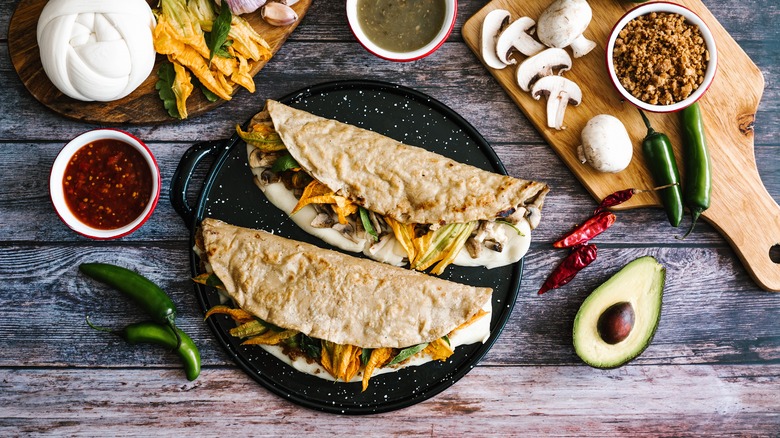What Are Mexican Quelites?
When you think of Mexican cuisine, you may conjure up thoughts of a deliciously fruity and tender al pastor taco, or maybe a burrito stuffed with braised meat and salsa wrapped in a warm tortilla. However, these Mexican staple dishes have seen a big transformation over the centuries. Mexican cuisine has drastically changed since its origins among the country's indigenous peoples. Historically, the staple diet in the country was mostly plant-based, as many of the country's diverse population lived off of the native plants, according to NPR. When the Spanish colonizers invaded the country, the plethora of vegetarian-friendly dishes began to diminish. Post-colonization, many Mexican dishes feature a variety of meats, including beef, pork, chicken, and goat.
However, these days vegetarian dishes are making a return as Mexican mainstays, and the reigning champ of these traditional Mexican edible plants may just be quelites. According to the Mexicanist, the word quelites derives from the Nahuatl (a native language of the Aztecs, as per Britannica) word quilitl. This word, according to the site, means, "vegetable or edible tender plant, and is applied to flowers, leaves, bulbs, and buds of tender trees." There are hundreds of these quelites that are eaten throughout Mexico, and although they have dropped in popularity over the years, there has been a recent trend to revive this traditional food.
Varieties of quelites
Did you know there are over 500 varieties of quelites (via The Kitchn)? Quelites, whether they're an edible flower, leaf, or bulb, are deliciously tender and healthy baby plants. Many of these plants have ancestral roots and are key ingredients of Mesoamerican cuisine.
Since there are hundreds of tasty varieties, it would be impossible to give a complete overview, however, there are a few that are more popular or more common than others. Papalo, for example, is a common herb that is used in Mexican cooking. World Crops notes its flavor and scent are both robust and unusual, and its citrus-like flavor is comparable to cilantro. It is most popular in Central Mexico, particularly the state of Puebla, and it is featured on one of this region's favorite sandwiches, cemitas.
Another favorite edible herb is purslane, also known as verdolagas. Once again, it is essential to Central Mexican dishes, per Pati Jinich. With its strong bitter flavor and zingy citrusy undertones, it has a unique taste that is perfect for pairing with sweeter ingredients, such as tomatoes.
Squash blossoms are typically thought of as an Italian appetizer, but they also make an appearance on Mexican dinner plates. Stuffed, fried, or filling a quesadilla, this tender plant's mild flavor allows it to be a versatile ingredient.
How to prepare quelites
Now that you know the names of a few common quelites varieties, you may be wondering how to prepare them. Such diverse varieties often require different preparation methods. However, there are some notable similarities to take note of.
According to The Kitchn, these plants are usually prepared and eaten together, whether they're grown in fields, harvested from the wild, or even collected from city sidewalk cracks. Preparation methods vary from region to region, since factors such as the ecosystems, culture, and microclimate differ around the country. They can be "sautéed, wilted, fried, and blanched and find their way into soups and stews, quesadillas, sauces, moles, and more," according to the food site.
While the plants are young, their flavors often pack a punch and make a noticeable difference in the dishes they're added to. Some also prize them for their health benefits, such as their abundance of fiber, vitamins, and minerals, according to Mexicanist.
How quelites are eaten
There are seemingly endless ways to prepare the myriad of quelites out there, and there are plenty of notable ones that make an appearance in Mexican fare across the nation. Such a diverse range calls for diverse dishes, and that's definitely the case.
Cemita, for example, is a Central Mexican dish that features papalo. The delectable sandwich is usually stuffed with fried meat, whether that's chicken, beef, or pork, topped with shredded cheese, creamy avocado, jalapeños, and, of course, zingy papalo, according to The Spruce Eats.
Another satisfying dish that features quelites is squash blossom quesadillas. These cheesy treats are often sold at street vendors, according to Mexico in my Kitchen. It's hard to beat the combination of cheesy and onion-y flavors with the freshness of the blossoms. This dish can also include another quelite: epazote, an aromatic herb.
Many quelites are also used for medicinal purposes, rather than eating for pleasure. For example, The Kitchn points out hoja santa. This herb, while it can be used on tacos or quesadillas, is often used in teas to soothe stomach aches or to aid insomnia.
There are thousands of uses for these traditional young plants, and you don't have to be in Mexico to take advantage. Plenty grow outside the country, and your mealtime plates could benefit from some fresh quelite flavor.



